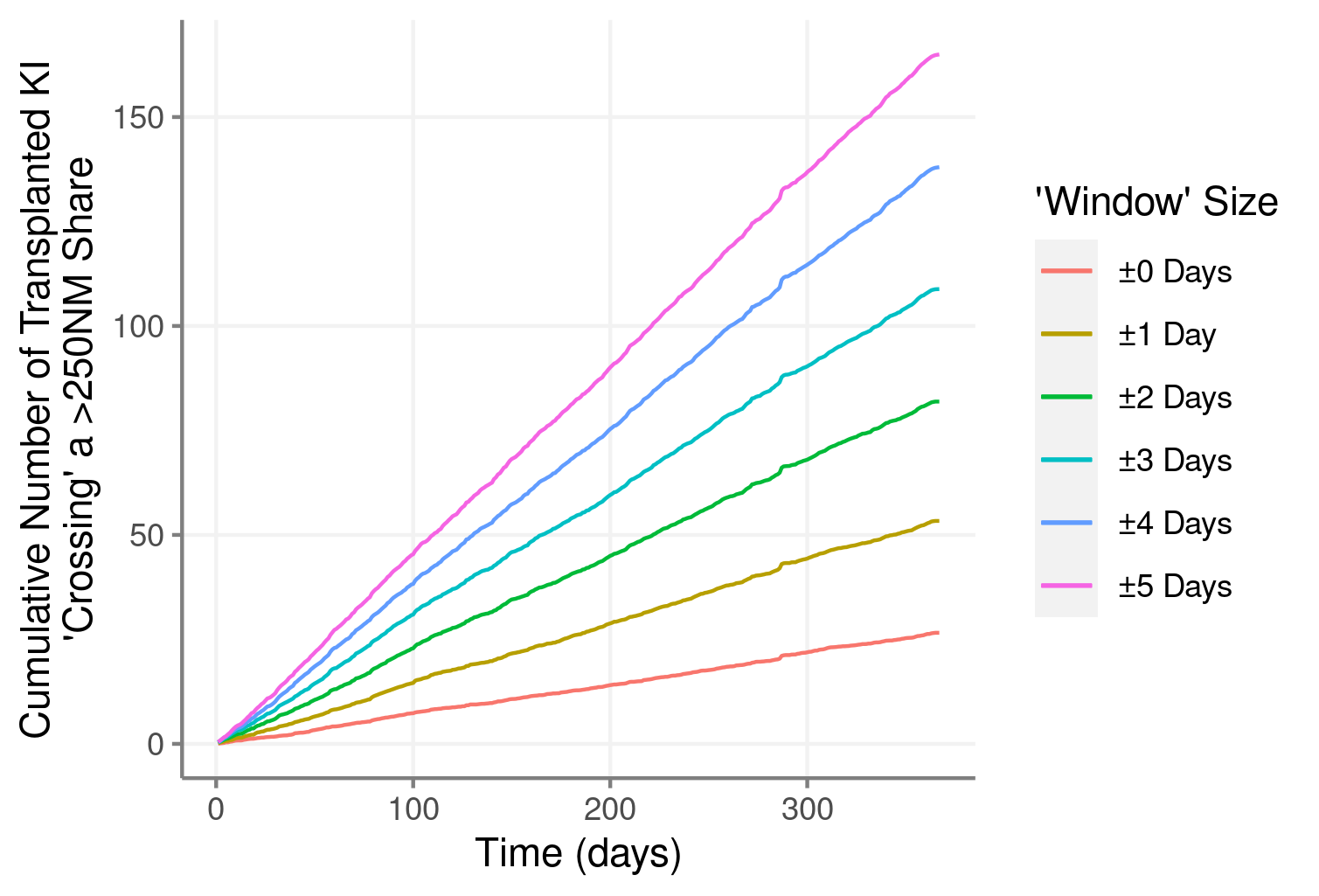What Does It Mean—and How Common is It—For Deceased-Donor Kidneys to ‘Cross in the Air’ En Route to a Recipient?
United Network for Organ Sharing, Richmond, VA
Meeting: 2022 American Transplant Congress
Abstract number: 263
Keywords: Allocation, Organ Selection/Allocation
Topic: Clinical Science » Public Policy » 21 - Non-Organ Specific: Public Policy & Allocation
Session Information
Session Name: Non-Organ Specific: Public Policy & Allocation
Session Type: Rapid Fire Oral Abstract
Date: Monday, June 6, 2022
Session Time: 3:30pm-5:00pm
 Presentation Time: 3:50pm-4:00pm
Presentation Time: 3:50pm-4:00pm
Location: Hynes Room 311
*Purpose: Recent initiatives to broaden organ allocation beyond “local” boundaries (replacing with circle-based or continuous allocation) have brought logistical concerns into sharper focus than ever before. One relevant critique of such a policy is that it could result in kidneys that “cross paths” with organs making the reverse trip—effectively driving up costs and ischemic injury. However, the precise event that constitutes a “cross” is not well-defined.
*Methods: We use simulated data from an agent-based model of kidney allocation to simulate the number of “crosses” that can be expected to occur based on various definitions. For our purposes, a “cross” is said to occur whenever a deceased-donor kidney arrives at a transplant center from a donor hospital more than 250 NM away within 1-5 days of the recovery of a second kidney—within the DSA of the first kidney’s destination—that itself travels more than 250NM to its destination. We experimentally vary the number of days (“time window”) to demonstrate how sensitive the outcome is to its various definitions.
*Results: Our simulations show that the number of crosses over a 365-day period vary from an average minimum of 27 (same-day crosses only) to 165 (crosses within +/- 5 days are counted). The number of crosses was sensitive to the window size, with all pairwise comparisons having p < 0.05. These crosses tended to be localized within areas prone to receiving distant offers: particularly centers in the Seattle, WA and San Francisco/Los Angeles, CA areas, on average accounting for 45% of all 127 crosses using a +/- 2-day window.
*Conclusions: Although ‘crossing in the air’ is not common, the precise frequency and consequence of it occurring depend on how it is defined and the individual circumstances of a cross. Any organs recovered from areas such as Alaska/Hawaii that are shipped elsewhere could be said to cross with organs travelling within the contiguous states. Furthermore, the time window within which a cross could occur has ramifications for center practices – if the expected time to the next non-crossing offer is short, then a center may be justified in waiting. Future work should build upon these questions and strive towards an agreeable definition of crossing that can be used to guide policy development.
To cite this abstract in AMA style:
Vece GR, Lindblad K, Stuart M, Diallo S. What Does It Mean—and How Common is It—For Deceased-Donor Kidneys to ‘Cross in the Air’ En Route to a Recipient? [abstract]. Am J Transplant. 2022; 22 (suppl 3). https://atcmeetingabstracts.com/abstract/what-does-it-mean-and-how-common-is-it-for-deceased-donor-kidneys-to-cross-in-the-air-en-route-to-a-recipient/. Accessed January 4, 2026.« Back to 2022 American Transplant Congress


